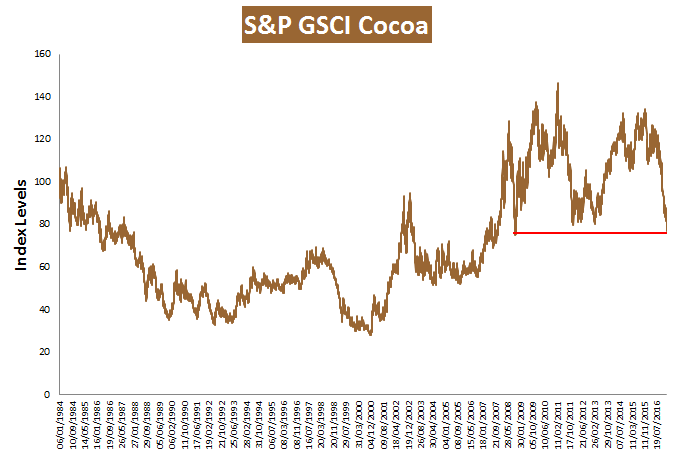The S&P BSE SENSEX acts as an indicator of the economic growth of the Indian economy. Any national or international change in economic activity has an impact on the S&P BSE SENSEX. In India, market participants are interested in knowing how movements in the S&P BSE SENSEX are related to various changes in economic activities. Every year, the Finance Minister presents the Union Budget, which is perhaps the most important economic activity in India. “Budget Day” comes with a lot of expectations, and it therefore has a bearing on the capital markets in both the pre- and post-budget sessions. The days before and after the budget session can also bring volatility in the capital markets.
The S&P BSE SENSEX’s total return increased from 17,190 on Jan. 31, 2007, to 38,926 on Jan. 31, 2017 (see Exhibit 1). This represents a 10-year CAGR of 8.52% for the period.
Exhibit 1: S&P BSE SENSEX Total Return Index
Source: S&P Dow Jones Indices LLC. Data from Jan. 31, 2007, to Jan. 31, 2017. Chart is provided for illustrative purposes. Past performance is no guarantee of future results.
During the past decade, India has been led by the Indian National Congress and the Bhartiya Janta Party, the two largest national-level political parties in the country. Mr. P. Chidambaram and Mr. Pranab Mukherjee were the Finance Ministers during the Congress regimes and presented the budgets from 2007 to 2013. The Bhartiya Janta Party came to power in 2014, and Mr. Arun Jaitley has been the Finance Minister since then.
Exhibit 2 showcases the various budgets, along with which Finance Minister presented the budget and the 30-day pre- and post-budget returns of the S&P BSE SENSEX.
Exhibit 2: 30–day Pre and Post-Budget Day returns of the S&P BSE SENSEX
Source: S&P Dow Jones Indices LLC. Data from January 2007 to February 2017. Chart is provided for illustrative purposes. Past performance is no guarantee of future results.
It can be seen in Exhibit 2 that in most years, the S&P BSE SENSEX witnessed high volatility in the 30-day pre- and post-budget sessions. The S&P BSE SENSEX saw its lowest return during these sessions in 2008, when the index fell in both (with returns of -6.2% in the pre-budget session and -7.5% in the post-budget session). The best post-budget performance was in 2016, when the index increased 11.8% in the 30 days following the budget day. In 2010 and 2011, the pre-budget returns were negative (-7.5% and -6.1%, respectively), but the post-budget returns were positive (8.6% and 11.3%, respectively). The S&P BSE SENSEX has had positive performance this year, with a return of 5.1% in the 30-day pre-budget session.
To conclude, we can say that the budget sessions are usually volatile for capital markets in India. The pre-budget movement is caused by market participant expectations for the budget, while the post-budget movement is based on the actual budget presented by the Finance Minister. The budget may be the most important economic activity affecting capital markets in India, and its relevance is captured in the movement of S&P BSE SENSEX.
The posts on this blog are opinions, not advice. Please read our Disclaimers.











